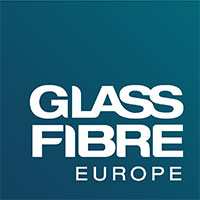Glass Fibre Europe welcomes the adoption by the European Parliament of the Net-Zero Industry Act (NZIA) as part of the Green Deal Industrial Plan’s pillar aiming at promoting investments in the production capacity of products contributing to the achievement of the climate neutrality objective. In particular, the glass fibre industry welcomes the inclusion of a benchmark for EU manufacturing capacity for NZIA technologies to reach at least 40% of the expected demand by 2030, and that energy intensive industries that produce components used in these technologies could also be supported as strategic projects.
Europe needs to increase the local production of key technologies to reduce its dependency on imports and enhance its strategic autonomy. However, Europe’s resilience equally lies in its capacity to source locally the materials and components that are needed to produce these key technologies. Glass fibre is one of them, and it deserves to be recognized and supported as such.
“One of the key technologies that the NZIA aims to promote is wind energy, which will certainly play a crucial role in the green transition and the achievement of the climate neutrality goal by 2050. However, without glass fibre, there would be no blades, no nacelle and no hub covers, and ultimately no wind energy industry.”, said Cédric Janssens, Secretary General of Glass Fibre Europe. It was therefore crucial that the scope of the strategic projects supported by the NZIA included the materials and components needed for their production. This means that the European glass fibre installations could, under certain conditions, benefit from the incentives and support measures provided by the NZIA. It will contribute bolstering the resilience of a competitive and sustainable glass fibre value chain in Europe, resulting in job creations and sustainable growth, and ensuring the technological advancements of the local industry.
The presence of a local supply chain will be equally critical to maintaining the European lead in key technologies. For example, R&D partnerships across the value chain, including the glass fibre industry’s input, have enabled the development of increasingly larger wind turbine blades – from 30 to 107 meters, leading to an increase in power output over the last 20 years from 2,000 to 20,000 kW per wind tower. “Many other examples exist in other strategic sectors using glass fibre, such as automotive, aerospace, construction and electric and electronic devices. When you think about this, you see that the presence of the glass fibre sector is vital for the competitiveness of these sectors in Europe,” said Cédric Janssens. For Glass Fibre Europe, the NZIA is just one part of the broader framework required to support investments in glass fibre production in Europe. “The European market is flooded with imports of heavily subsidised and dumped products from Chinese producers. For the NZIA to succeed, or any other policy aiming at increasing local production, the first step is to restore a level-playing field on the European market,” continued Cédric Janssens. Glass Fibre Europe calls on the European Commission to apply trade defence measures assertively and extensively in 2024 at each relevant step of the value chain. And, when trade defence measures are in place, effective custom controls of imports should take place to prevent circumventions.


